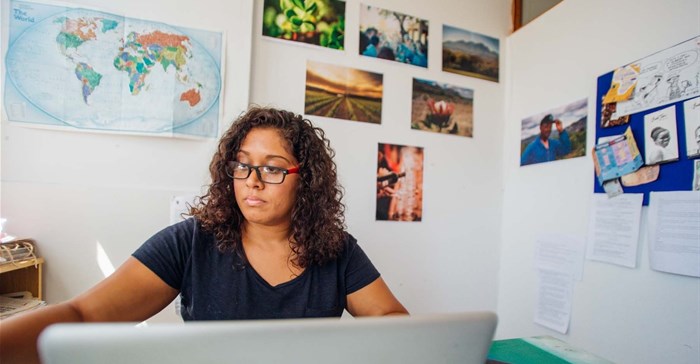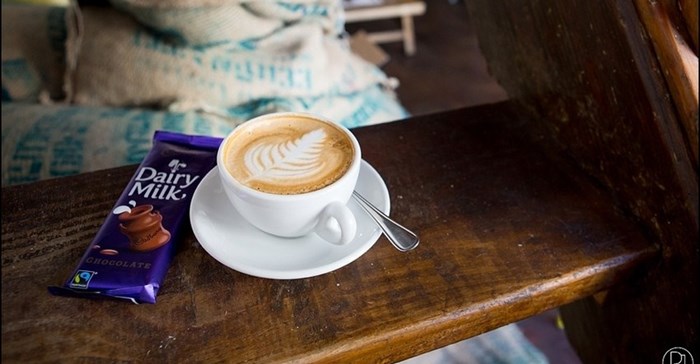"Fairtrade South Africa is celebrated for its pioneering spirit; the Cape Town-based office was the global organisation's first marketing and business development setup in a developing country. This has subsequently led the way for other emerging markets, like Brazil, India and Kenya, who later followed suit by opening local offices and steadily growing domestic demand. We like to think innovation is in our DNA," says Lynsay Sampson, marketing and media manager at Fairtrade Label South Africa.

Lynsay Sampson - Photograph by Lindsey Appolis
We asked Sampson to tell us more about Fairtrade, its mission and its products...
Why is Fairtrade important, what are you trying to change?
Lynsay Sampson: Fairtrade is an ethical certification which certifies product supply chains. It is also a powerful tool that consumers can use all over the world to change the world every day. With one simple choice, you can make agriculture more environmentally friendly and allow people on farms to lead the dignified life everyone deserves. In terms of numbers, 1.5 million farmers and workers globally benefit from more equal and equitable supply chains, 64% of which are based in Africa and the Middle East.
Tell us about Fairtrade and its products and design. What do you focus on?
Sampson: We have a range of Fairtrade certified products in the local market and are often intrigued by the tools brands use to differentiate themselves. If we use wine as an example, we see this in the interesting flavour combinations winemakers are trying, together with lowered alcohol volumes for healthier consumers.
The presentation of wine is another area that has evolved in recent years and this is evident in the selection of innovative, locally designed packaging. Gone are the days of the standard 750ml wine; these days you can find anything from 187ml to five litres on retail shelves. We are also seeing an increasing number of pouches and box wines, with varying quantities, designs and colours.

Full Ega Range
We were thrilled to hear Fairtrade was recommended as a strategy the wine industry should use to add more value to their wines and to make their wines more sexy.
What has been the biggest challenge in gaining momentum in Fairtrade?
Sampson: Fairtrade enjoys wide consumer recognition and brand affinity in the organisation’s more traditional markets, like the North America, Europe and Australia/New Zealand, where consumers are well versed with what is widely accepted as the world's most trusted and recognised ethical label.
In South Africa, contrastingly, because of the disparity of the South African consumer population, we needed to be innovative to grab the attention of local consumers and business decision makers. To do this, we have employed various strategies: educating consumers on their preferred communication platforms, dispersing information in a relatable tone and language, which does not alienate consumers. So while our goal is to educate, our goal is to make it easy and fun to learn.
What has been the biggest highlight on the Fairtrade journey so far?
Sampson: The exciting thing about starting a new office is that we are constantly breaking barriers and celebrating new milestones. Our biggest accomplishments to date have been to work with the local Cadbury Dairy Milk team to get all their Plain and Silk slabs Fairtrade-certified, which makes Fairtrade a lot more accessible to a wider consumer base.
The second milestone is forging a strong relationship with Pick n Pay six years ago. The national retailer continues to offer the widest range of Fairtrade products in South Africa – a commitment no other local retailer has managed to emulate. They remain the only supermarket giving any meaningful support to Fairtrade, and today, six years later, they are still as dedicated to the commitment.
How do you keep the creative juices flowing at the office?
Sampson: We try and spruce up the office décor from time to time - it’s magnificent what a new lick of paint can do for the staff moral, especially when we’re the ones doing the painting! We have a dynamic international team, which brings a range of perspective, experience and energy.

Lynsay Sampson - Photograph by Lindsey Appolis
Luckily for us, we also have the luxury of working with various brands, from multinational corporations to a one-man operation, so we are constantly interacting with various personalities and sharing experiences, which makes for interesting inspiration.












































